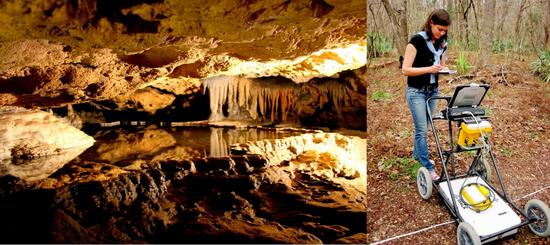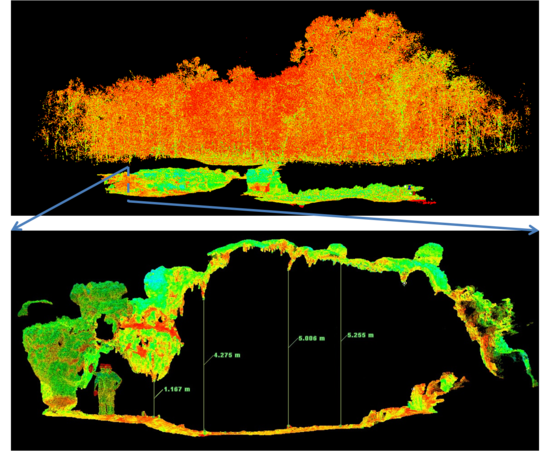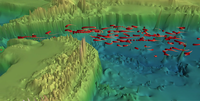Grad Student Karina Khazmutdinova: Air Circulation in Dragon's Tooth Cave

Being a natural laboratory, a cave carries imprints of ancient and recent climates, allowing us a unique setting for studying climate change. Karina's work focuses on understanding of the cave's breathing patterns through the main opening and through "chimneys." Proper modeling and simulation of airflow in the cavern will help interpret speleothem records more accurately and see if there is any airflow impact on speleothems' growing patterns.
A detailed, high-resolution three-dimensional map of DTC with the Dragon's Belly extension was created in November 2015. Using time-of-flight range measurements enhanced by modern Waveform Digitizing technology, Leica ScanStation P20 measures of up to 1 million points per second.

To make sure every single detail of the cave will be captured, the measurements were conducted at 52 stations throughout the cave. Field data was converted into digital 3-D point cloud using Cyclone software. A high-resolution 3-D volumetric model is used to more accurately model air flow in the cavern.
Â
GFDI Wind Tunnel Experiment
Publications
Published research from GFDI
GFDI Research
PDF's of reports published at GFDI





